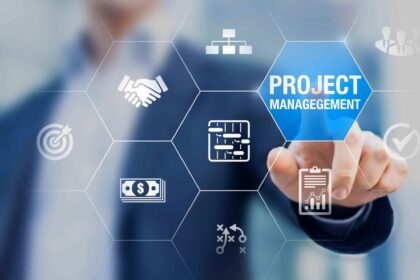When it comes to business, learning management system design is important. The main advantage of using this technology in a business is that it improves employee training, making onboarding and team building more effective and efficient. In addition, LMS allows businesses to monitor employee progress and ensure that they are meeting objectives.
By using LMS, businesses can also save time and money on training costs. In today’s competitive market, any advantage that a company can get should be taken advantage of. Therefore, implementing an LMS is a smart business decision.
Modern Trends In LMS
When developing an LMS, you should pay attention to the following trends:
1. Minimalistic design:
Learning management system design is trending towards a more minimalistic style. This means open spaces, crisp edges, and fewer bright colors. The goal is to focus on important details and avoid distractions. This can be accomplished with a monochromatic pattern or by using white space to declutter pages and highlight key points.
By simplifying the design, learners will be able to better focus on the content and retain information more effectively.
2. Design For Mobile Phones:
When creating learning materials, it is important to keep in mind that many users will be accessing the content on their smartphones. Often, service providers develop content for desktop users and then convert it to be viewed on mobile devices without considering the different screen sizes and capabilities.
As a consequence, the user experience can suffer greatly. Improving the mobile user interface ensures that learners will be more likely to complete learning modules once they are available.
3. Analysis Of User Experience:
In the modern world, data is everything. And when it comes to education, analytics is increasingly playing a role in shaping the learning experience. By collecting data on how learners interact with content, educators can gain valuable insights into what works and what doesn’t. Analytics can be used to compare different teaching styles, for example, to see which one results in better knowledge retention or engagement.
Additionally, analytics can track a learner’s strengths and vulnerabilities so that customized learning materials can be created. As more and more data becomes available, we can expect even greater changes in the years to come.
4. Visual Elements:
Using visuals in learning materials is key to engaging learners and helping them quicken their pace of understanding abstract concepts. This can be seen in the use of infographics, graphs, and other visualizations which communicate information more effectively than a paragraph of text.
In addition, videos are an important aspect to include as they provide a social dimension to learning by featuring a brief lesson or story. Through the use of visuals, learners can see the concepts being taught which allows for a better understanding and engagement with the material.
Step-by-step instructions for creating an LMS
When we figured out the main trends, it became clear that LMS should strive for simplicity, but at the same time be able to emphasize the main thing. The easiest way to achieve the goal is to follow the following development steps.
Step 1: Select The Required Set Of Features
While it is important to have a robust set of features in your learning management system (LMS), it is also important to keep in mind that each feature will take time and effort to implement and test. As a result, it is important to select the core features that are essential for your LMS, as well as a few optional features that would be beneficial, but not essential.
Additionally, it is helpful to create a list of features that you might want to include in your LMS after its release, as this will help the development team to make provisions for easier implementation of those features with subsequent software updates.
Step 2: Choose A Platform
Once you have decided to create a learning management system, you will need to select a platform on which to build it. There are three main types of platforms to choose from ready-made SaaS tools, WordPress-based solutions, and custom-built engines. The platform you select will depend on your budget and your comfort level with different types of systems.
If you are willing to spend more money, a ready-made SaaS tool may be the best option for you. However, if you are more comfortable working with WordPress, a WordPress-based solution may be more appropriate. Finally, a custom-built engine may be the best choice if you need a fully customized solution.
Step 3: Create Tutorials
It is important to create content that is relevant and useful for employees. The first step is to assign specific courses to corresponding departments in your company. Make sure to include learning activities, such as assignments, self-paced modules, attendance, and a testing module. This will help make learning easier for employees and ensure that the course is properly tailored to their needs.
Creating a course that is not assigned to a department can lead to problems down the road. By taking the time to thoughtfully consider each department’s needs, you can avoid these potential issues. Assigning courses and departments thoughtfully will help create a successful LMS.
Step 4: Creating A Plan And Design
Creating a user-friendly and visually appealing learning management system is crucial to its success. The design should be clean and simple, with corporate colors that are easy on the eyes. The layout should be intuitive and easy to navigate, with all the important features within easy reach. Additionally, the system should be responsive and work seamlessly on all devices.
Step 5: Build An MVP
An MVP is a functioning version of the product with the minimum amount of features. The point of an MVP is to convey the idea of the final product. You may use it to promote your LMS before the investors get additional funding. You can also ask a test group of users to explore the features of your app and share the experience.
This information is valuable for further improvements and additions before the MVP becomes the final product. Remember, the key is to start with a great idea and then build from there.
Step 6: Testing
Ensuring proper testing is critical to releasing a high-quality product. OA specialists can help identify potential areas of improvement and ensure that the product is ready for release. Quality should always be the highest priority, and patience is important to allow for all potential bugs to be found and fixed.
Without proper testing, a learning management system can crash and cause significant problems. However, with proper testing and quality assurance, a learning management system can be a valuable tool for bringing knowledge and money.
Conclusion
You can create a successful and user-friendly learning management system by following these six simple steps. By taking the time to thoughtfully consider each department’s needs, you can avoid potential problems down the road. Assigning courses and departments thoughtfully will help create a successful LMS.





